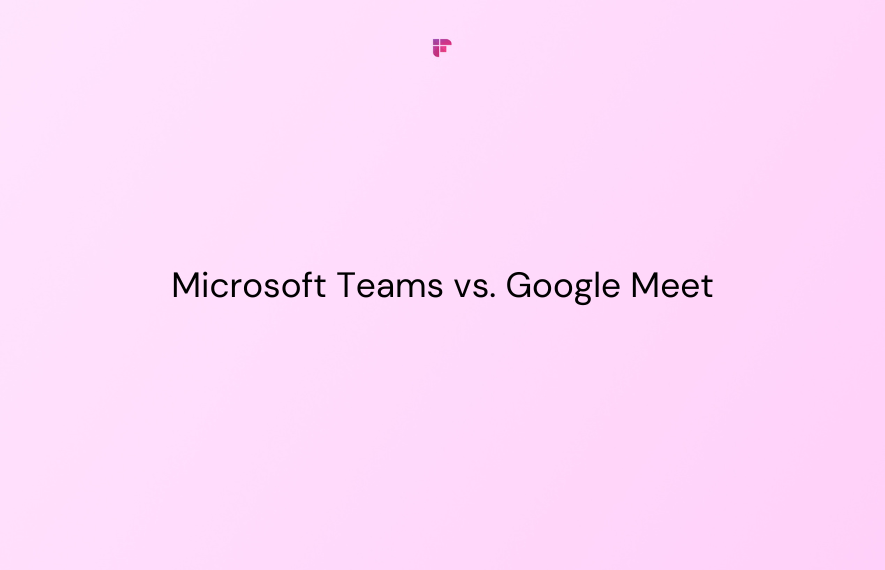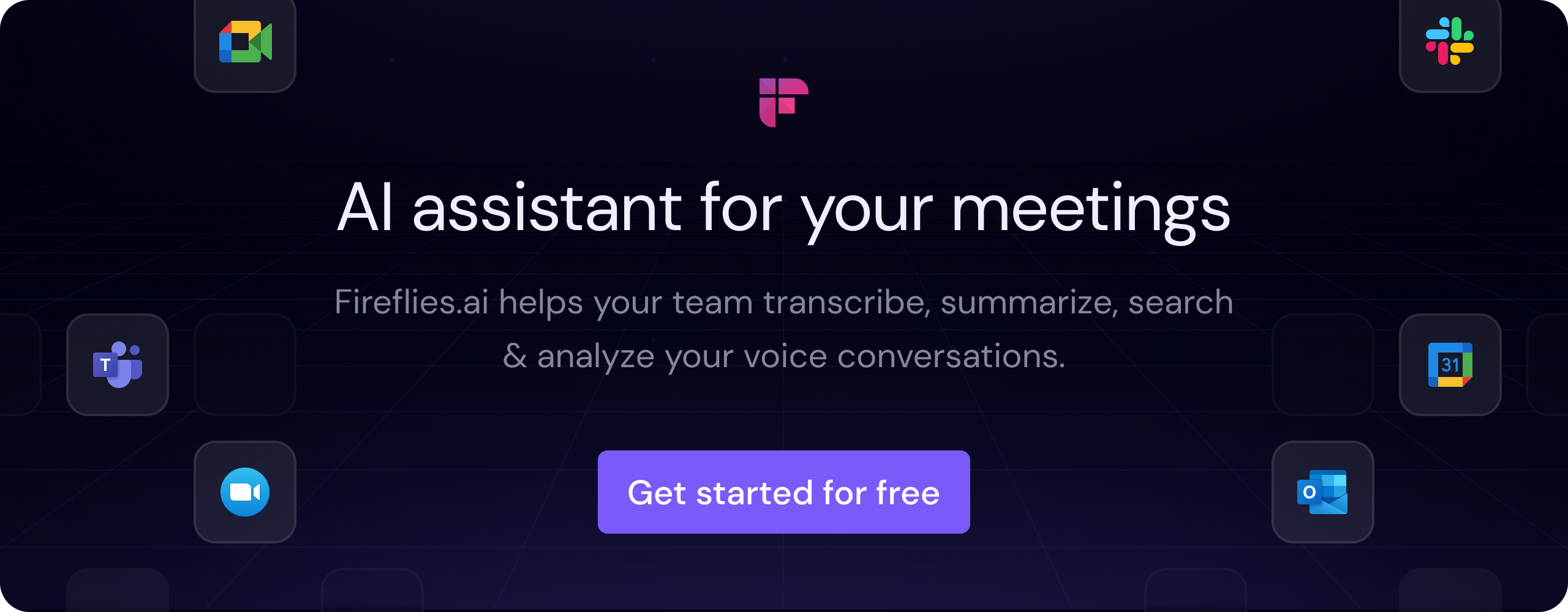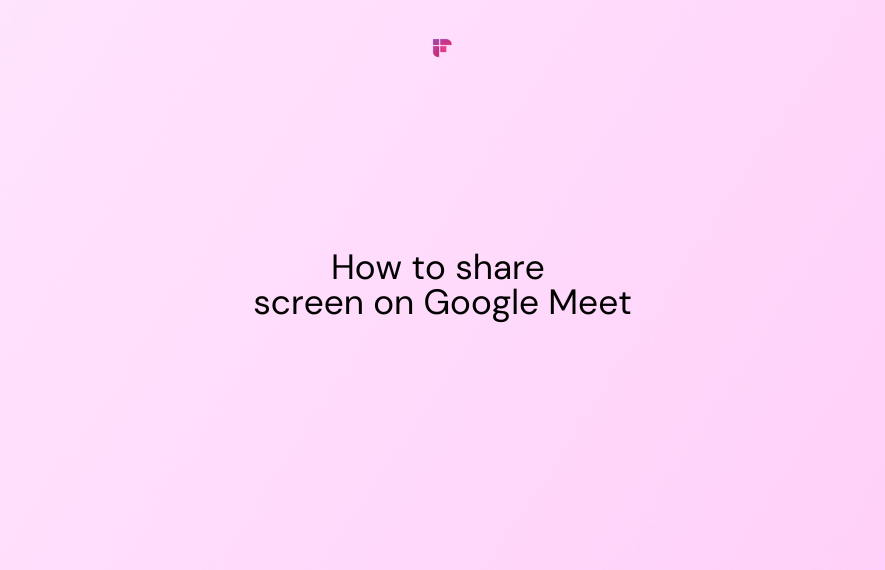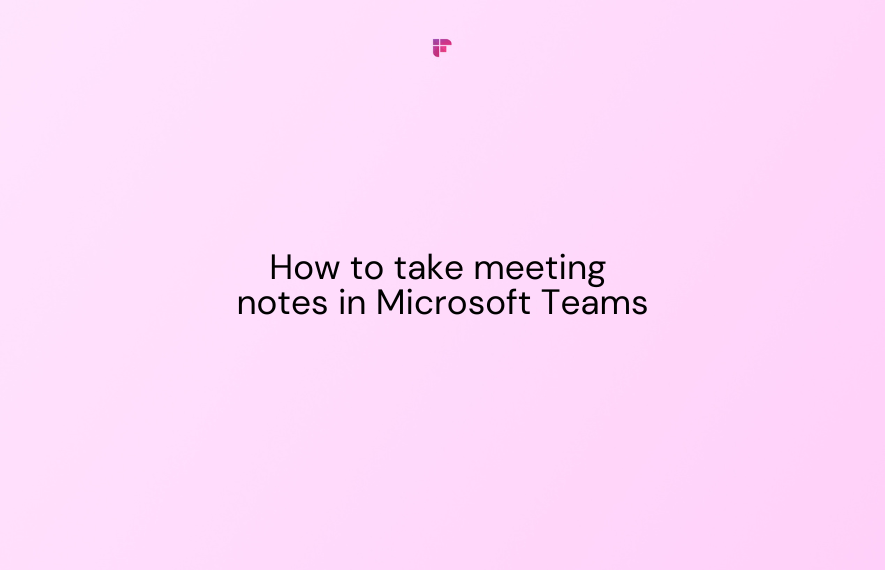The ease and convenience of remote collaboration have pushed Google and Microsoft to boost their video conferencing platforms with features that go above and beyond.
So, how do you choose which one is a better fit for your team?
In this blog, we’ll compare Google Meet Vs Microsoft Teams and evaluate them holistically.
Google Meet vs. Microsoft Teams
Here are some of the key features and tools that stand out between Google Meet vs Microsoft Teams.
1. Conferencing capabilities
Both Google Meet and Microsoft Teams have a fantastic range of communication features to make your meetings better.
For starters, both have the ability to record meetings, a chat feature, breakout rooms, polling, and screen sharing. They also enhance accessibility with live transcriptions and automatic captions. Microsoft Teams offers captions in 50 languages, while Google Meet goes even further with support for over 65 languages.
When it comes to chatting, Microsoft Teams allows you to send direct messages to individual participants, but Google Meet only offers public chat. For collaborative brainstorming, Teams has a built-in whiteboard. Google Meet phased out its native whiteboarding tool, Jamboard, in 2024, so users need to turn to third-party options instead.
One of the standout features of Microsoft Teams is its comprehensive webinar capabilities. You can easily schedule webinars, handle attendee registrations, deliver engaging presentations, and even analyze participant data, all within the Teams platform.
2. Integrations
Both Google Meet and Microsoft Teams have their unique strengths when it comes to app integration.
Google Meet seamlessly integrates with other Google Workspace tools like Gmail, Google Calendar, Drive, Chat, Sheets, and Docs. It offers about 40 add-ons, such as whiteboarding tools like Miro and Lucidspark. Plus, you can connect it with over 200
popular third-party apps using Zapier.
On the other side, Microsoft Teams is tightly integrated with the Microsoft 365 suite.
This allows for easy sharing and collaboration on Word documents, Excel spreadsheets, and presentations right within the chat. It goes a step further by offering over 700 integrations with tools like Evernote, Zoom for Teams, Trello, ClickUp, and Asana.
Ultimately, the best collaboration platform really comes down to your specific needs and the tools you're already using.
💡 Say goodbye to the stress of note-taking with Fireflies!
If you're looking to simplify your meeting notes, Fireflies integrates smoothly with both MS Teams and Google Meet, automatically transcribing, summarizing, and analyzing your meetings.
3. User interface
Most participants in a meeting want an easy and straightforward interface, making it easy to find your way around and minimize the need for guidance or tutorials.
Google Meet's minimalistic and user-friendly design makes setup and navigation quick and effortless. It also gives you better control over participant roles during meetings, providing a consistent experience across different devices.
On the flip side, Microsoft Teams features like chat, video calls, and collaborative tools have a learning curve for newcomers. Getting the hang of all the functionalities might take some extra time and effort.
4. Meeting length
When you're picking a video conferencing tool for your team, the length of meetings is an important factor. We all know that meetings can stretch longer than expected because of unexpected discussions or wandering topics. Imagine a crucial conversation being cut off midway because you've hit the time limit.
So, it's smart to choose a platform with flexible meeting lengths. Luckily, both Google Meet and Microsoft Teams have got you covered with generous options.
Both platforms offer free plans, allowing group meetings of up to 60 minutes, which is enough to accommodate most meetings.
If you opt for paid plans, Google Meet lets you have video calls that can go for up to 24 hours, while Microsoft Teams takes it even further, allowing for 30-hour sessions. You can dive deep into discussions without worrying about being cut off!
5. Maximum participant capacity
Both Google Meet and Microsoft Teams offer pretty similar free plans. They each let you host meetings with up to 100 participants, which is great for small businesses or teams on a budget looking for basic conferencing features without spending any money.
When it comes to their paid plans, Google Meet can support 1,000 participants at its highest-priced tier.
On the other hand, Microsoft Teams allows up to 300 participants in its Standard plan, and if you go for the Enterprise plan, you can have anywhere from 500 to 1,000 participants. Plus, for live events, Microsoft Teams really steps it up, accommodating up to 100,000 participants in those Enterprise plans.
6. Storage
For constructive collaboration, your organization may want to record all the dealings from your meetings. Cloud storage then becomes a factor before settling on a conferencing tool.
Google Meet provides each user with 15 GB of cloud storage for free, and with a paid plan, you can get up to 5 TB of storage.
Microsoft Teams offers 5 GB of storage in its free version, and its paid plans can provide from 10 GB to unlimited storage.
7. Support
Both Google Meet and Microsoft Teams recognize how crucial it is to have seamless collaboration. That's why they provide strong support options to help tackle any questions or tech issues that might pop up during your meetings.
Free resources
Both platforms have a detailed Help Center packed with articles, FAQs, and troubleshooting guides. This makes it easy for users to quickly find solutions to common problems.
Plus, there are short and helpful video tutorials also available. They also host lively user communities in online forums where people can connect, share tips, and collaboratively find solutions.
Business users
If you upgrade to a paid plan, you gain access to 24/7 phone and web support. This means immediate help is just a call away, which keeps things running smoothly. And if you go for the Enterprise plans, you get even more advantages with priority support. This ensures that any help you need gets dealt with sooner, keeping your important meetings on track.
8. Security features
Both Google Meet and Microsoft Teams offer strong security features to protect user privacy and data. They allow you to control meeting access, use encryption for data in transit and storage, and support multi-factor authentication (MFA) for added security.
Organizations can also utilize enhanced security programs, and with Single Sign-On (SSO), users can access both the conferencing platform and other applications easily.
However, these platforms differ in some aspects; for example, Google Meet requires paid users to manually activate MFA, while Microsoft Teams enforces it automatically for paid plans.
Your choice depends on your company's security needs; Microsoft Teams may be better if automatic MFA is a priority, whereas Google Meet could be more suitable if you prefer manual control over security features.
9. Pricing
Both Microsoft Teams and Google Meet have free plans that you can jump right into.
While Teams doesn’t provide a free business option, you can use the personal plan if you can work with its limitations.
On the other hand, Google Meet's free plan is a bit more flexible. It allows you to host unlimited meetings with up to 100 participants, but each meeting is capped at 60 minutes, which is pretty similar to what Microsoft Teams offers.
To use the paid features of Google Meet, you'll need to get a Workspace subscription.
Here's a breakdown of the costs for the Google Workspace plans:
- Business Starter: $8.40/user/month
- Business Standard: $16.80/user/month
- Business Plus: $26.40/user/month
- Enterprise: Custom pricing
Apart from the free plan Microsoft Teams offers three different paid options for both individuals and businesses.
- Microsoft Teams Essentials: $4.00 user/month
- Microsoft 365 Business Basic: $6.00 user/month
- Microsoft 365 Business Standard: $12.50 user/month
The verdict
When it comes to choosing between Microsoft Teams and Google Meet, it really boils down to what your organization needs and the platforms you're already working with.
If you're just using it for personal reasons or for a small business, Google Meet could be the way to go. However, if your organization is already on Microsoft 365, it's best to stick with Teams. The same goes for Google Workspace users—they’d be better off with Google Meet. While Google Meet is great for video calls, Microsoft Teams really excels when it comes to making calls quickly and easily right from chat.





